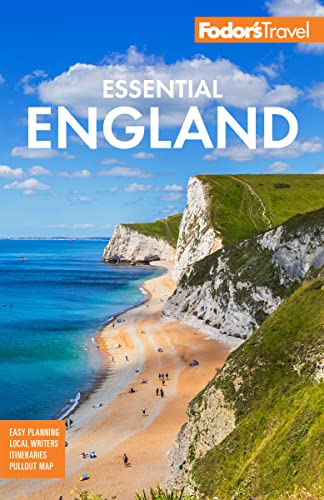East Anglia's Seafood Bounty
Perhaps unsurprisingly in an island nation, the harvest of the rivers and the sea forms an essential part of the British culinary tradition. Few regions are so closely associated with a love of good seafood as East Anglia.
The coastlines of Essex, Suffolk, and Norfolk overflow with towns that specialize in one type of seaborne bounty or another. Shrimp, crab, and oysters are still caught using centuries-old methods; and lobsters, crabs, and mussels from Norfolk are sent to the top restaurants in London. Changing tastes tell a kind of social history of their own: oysters, now an expensive luxury, were once considered peasant food; and a new generation of chefs, eager to reconnect with forgotten ingredients and methods, is rediscovering old-fashioned flavors such as eel and samphire. Then there's that most famous of British seafood dishes—humble fish-and-chips. Some of the best in the country can be found in Suffolk towns such as Aldeburgh, where savvy fish-and-chip shop owners have installed webcams so customers can check how far the line stretches down the street.
Sea Salt
Evidence suggests that sea salt has been harvested in East Anglia for 2,000 years. It's popular today—but only one regional company still produces sea salt in the local style. Based in and named after the harbor town of Maldon in Essex, Maldon Crystal Salt Company uses a distinctive method that yields thin, flaky crystals with a delicate piquancy. Praised by chefs, Maldon salt is widely available at English supermarkets.
Choosing Your Fish-and-Chips
The key word is simplicity: very fresh fish, deep-fried in batter, served immediately. Chips (slices of fried potato) must be thick cut and slightly soft, not crisp like fries, and sprinkled with salt and vinegar. The kind you get in fish-and-chips shops is almost always better than pub offerings. Cod, plaice, and haddock are the most popular choices, but the concern about cod overfishing means that you may see pollock, coley, or skate as alternatives.
Cromer Crab
Known for its juicy flesh and higher-than-average white meat content, the best East Anglian crab comes from the area around Cromer in Norfolk. It's often served in salads, pasta dishes, and savory crab cakes.
Eel
A staple of the East Anglian diet for centuries but long out of favor, the humble eel is making a comeback at fashionable restaurants. Eels are usually served smoked (on their own, or in soups or salads) or jellied in a flavored stock with the consistency of aspic.
Mussels
This type of small clam is particularly associated with the towns of Brancaster and Stiffkey. Cheap and versatile, mussels can be served on their own. with other seafood, or in soups and stews.
Oysters
The Essex coast has been producing oysters since Roman times. A luxury item, oysters are usually served raw with few accompaniments—as a main course by the dozen or as a starter by the half dozen.
Samphire
A green sea vegetable that grows wild on shores and marshland, samphire is abundant in East Anglia, where it’s an accompaniment to local seafood. Crisp and slightly salty, it’s often described as "tasting like the sea."
Sheringham Lobster
This well-regarded lobster is usually served with melted butter or with fries as a kind of upper-class cousin of fish-and-chips. Lobster bisque—a rich, creamy soup—is also popular.
Yarmouth Bloaters
A form of cured herring produced in Great Yarmouth, near Norwich, these fat, slightly salted fish aren’t gutted before being smoked. This gives them a particularly strong, almost gamey flavor.




